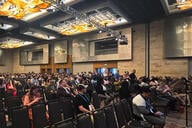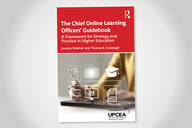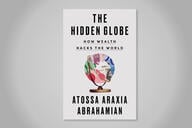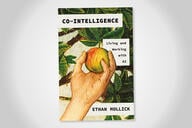You have /5 articles left.
Sign up for a free account or log in.
Who owns the content that is created for online and blended courses? The faculty? The institution? Both?
Do you know the answer to this question for your school? Would your answer agree with the provost or general counsel?
Another way to ask this question is to inquire if the intellectual property policies at your institution have kept up with the digital learning revolution. Back in the days before teaching and learning were digital affairs, the rules governing intellectual property were fairly simple. At most institutions, faculty members owned their IP. If a professor wrote a book or an article, she owned the IP for the book. (Unless she signed away the rights to a publisher or journal, but that’s a different story.) Professors also owned the IP for the lectures that they gave.
Staff members, on the other hand, have not historically owned the intellectual content they generated as part of their employment. Staff IP often remained with the university.
This description of faculty and staff IP is admittedly a broad and incomplete generalization. Today, only a minority of professors are tenure track/tenured. IP policies for contingent faculty vary greatly by institution, with adjunct and part-time professors less able to claim or defend IP rights.
Nor does the heuristic of faculty members owning their own IP, and the institution owning staff IP, cover all faculty/staff examples. IP ownership for librarians with faculty status may be less clear cut. So are IP policies for content created by graduate students acting in instructor roles.
Still, as a general rule, we can probably safely say that among tenure-track/tenured professors, ownership of intellectual property related to teaching and research has been (by and large) retained by faculty members. How is this rule of thumb of faculty IP around teaching materials altered, however, when it comes to digital teaching and learning materials?
Who owns the teaching content once it is uploaded to the university’s learning management system? Where does IP ownership reside for blended or online courses that are created by a team of instructional designers and media producers working with the faculty member? If a professor records a course video in a studio, does she still own that video? Does it matter if the course video was created on a laptop?
If the university is providing resources for the creation, storage and dissemination of digital learning materials but those digital files are based on a professor’s ideas, then who owns the IP? Is ownership even the issue? Or, is it an issue of access rights and who can grant them?
The answers to these questions around digital learning and IP are never simple.
There are a variety of models in existence, particularly when it comes to content that is created with a significant set of university resources. In some cases, the universities owns all the IP. In others, the faculty retain sole ownership. And, in others, the ownership or use rights are shared.
In our experience, the best approach to faculty IP around digital learning materials is one of shared access and use rights for all involved.
Under this model, both the institution and the professor understand that each party has invested time, energy and intellectual content. Digital learning content cannot be created absent either the ideas and the work of the professor or the expertise and investments of the institution.
A policy of joint ownership for digital learning materials recognizes that teaching is evolving. No longer is it the case where the school provided the lecture hall, the whiteboard and the overhead projector but not much else.
Teaching in higher education, and particularly teaching in blended or online programs, is resource intensive.
Colleges and universities are making significant investments in people (instructional designers, media educators, librarians, etc.) and digital platforms and tools in support of the teaching and learning enterprise.
At the same time, every college and university would be wise to affirm principles of faculty control of and access to the intellectual property created for teaching. Quality education relies on the expertise of educators. Professors rely on the protection of their IP in order to ensure that their work is not unfairly appropriated.
This is a tricky issue that will not go away anytime soon, but it’s one that all schools should be paying attention to as we continue to evolve digital learning materials and approaches.
What are the IP policies for digital learning materials at your school?




